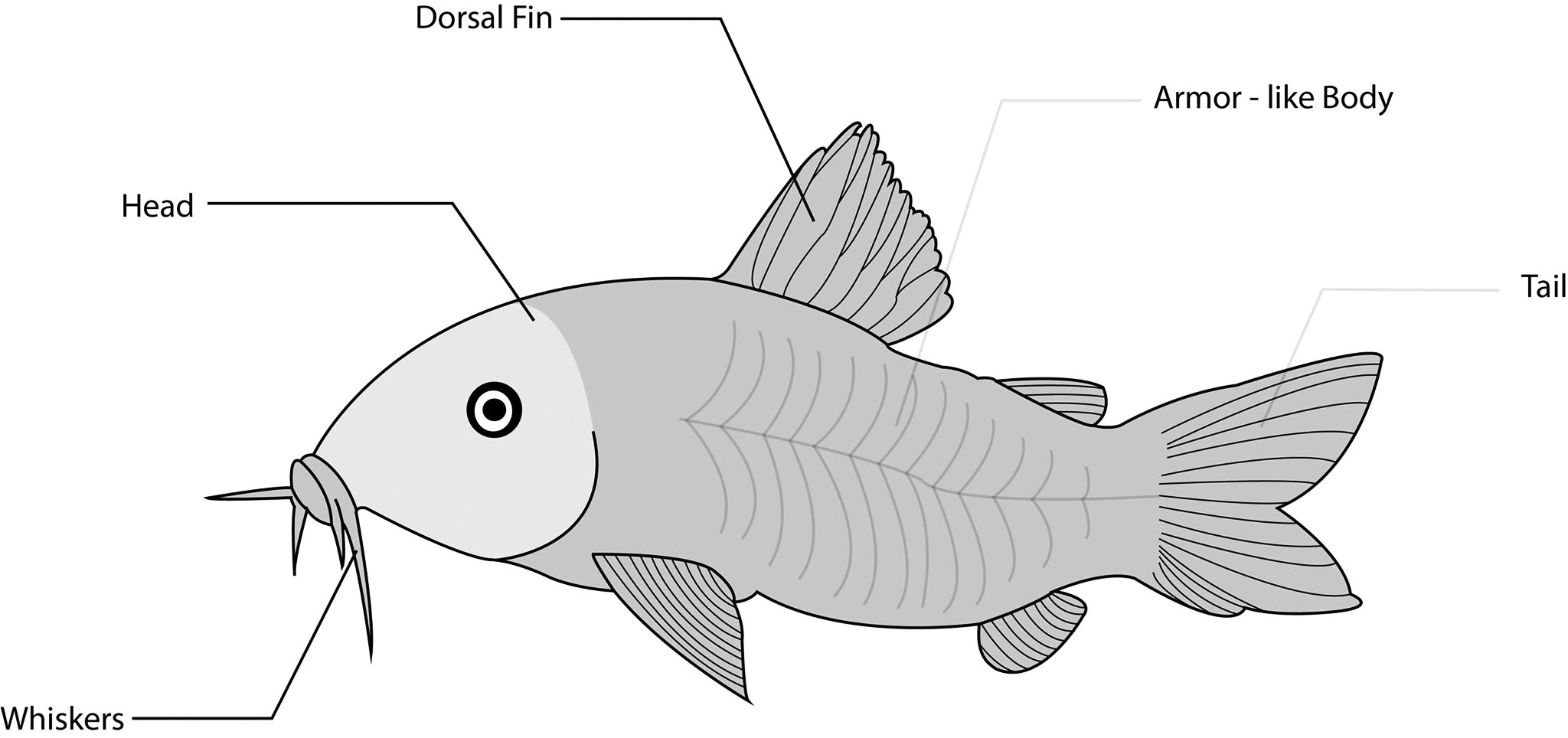Aquarium fishes are very popular in pet keeping. Top and mid dwellers are extremely popular for beginner, intermediate, and advanced hobbyists alike. After hobbyists spend some time with their tanks, they will soon feel empty when they see nothing below, and discover the need to put in bottom dweller fishes. These fishes are great additions to tanks since they generally eat excess food that drop to the bottom of the tank.
The “Cory Catfish” is a longtime favorite among freshwater fish. They are also called “armored catfish” because of their plates that look like bone material; these encompass their whole bodies. As for their lifespan, they normally live for more than 5 years.
Taking care of these fish is relatively easy as they are well suited for beginner hobbyists. Corys make for excellent additions to most community tanks because of their peaceful nature. The best time to feed them is at night since they are nocturnal.
It’s a fish so pleasant and peaceful, yet it gives so many wonderful experiences to a fish hobbyist. That is the corydora catfish.
There are more than 150 kinds of corydoras. In the Philippines, these are the ones that are most commonly available.

- PEPPERED: This corydora has dark green and black spots with a white underside, as they are known to have come from the larger river systems in South America. It’s on my wish list!
- STERBAI: The sterbai corydora has a pattern of white spots on a dark background on its head. It is one of the most popular corydora because of its attractive makings. This is one of my favorites.
- PANDA: This is a gold catfish with black patterns covering their eyes, dorsal fin, and the base of their tails; their bodies have an off-white to faint pink color. It is very adorable
- ALBINO: This catfish has red eyes, a light orange color, and sharp spines in the dorsal, pectoral, and adipose fins. It is most popular in the Philippines.
- BRONZE: This one only has a single color variation, which is the green cory. It is one of the oldest and most familiar of the cory catfishes. Long fin varieties are also available. This is a classic favorite of mine.
- SKUNK: Unlike other corydoras that have a black stripe that fully trails down their bodies, the skunk corydora has a back stripe that trails down before its tail then splits; it then colors the lower edge of the caudal fin. This one is also on my wish list.
THE BASICS
- Scientific name: Corydoras
- Water condition: pH level 7.0 – 7.8
- Temperature: 72-78 degrees Fahrenheit
- Lighting: Standard community tank lighting
TANK
A 20-gallon tank is ideal for housing a small school of adult corydoras. Six to eight of them is a nice number and will keep your corydoras calm and almost stress free.
These fishes are bottom dwellers, which means that they like having a tank with many plants and hiding places. It’s recommended to have at least 2 inches of aquarium substrate or gravel at the bottom of the tank to facilitate the placement of plants and hiding places where they can lay low. Take into consideration the use of smooth substrates or gravel since sharp particles can harm their whiskers.
FEEDING
These fish are omnivores, meaning, they eat both plants and meat. Pellets, fish flakes, and feeder tablets are typical food for cory catfish. They eat their food from the ground (instead of from the water’s surface the way other, regular fishes do), which makes them unique.
This also makes them good tank cleaners; however, this does not mean that they are a substitute for proper tank care.
BREEDING TIPS
- A ratio of one female and three males is ideal.
- The male’s ventral is more pointed, while that of the female is more paddle-shaped. Females are a bit larger than males and have rounder bellies.
- Separate the males and females for about a week or two for conditioning
- They love cold weather and a sudden change in temperature stimulates them to breed.
- Spawning takes place when the males start chasing the females
- Once mating has taken place, the female lays her clutch of eggs. She will clean the laying spot with her mouth. She then moves upward and lays her eggs.
- Eggs adhere to the glass sides of the aquarium, but some eggs may be attached to sponge filters.
- The eggs will hatch in three or four days
- The fry are fed with micro worms and newly hatched brine shrimp.
This appeared in Animal Scene magazine’s July 2017 issue.







